Abstract
OBJECTIVE: To determine the cost-effectiveness of induction of labour versus serial fetal monitoring while awaiting spontaneous labour in postterm pregnancies. DESIGN: Cost-effectiveness and cost-minimization analyses conducted as part of a Canadian multicentre randomized clinical trial. SETTING: Twenty-two Canadian hospitals, of which 19 were teaching hospitals and 3 were community hospitals. PATIENTS: Women with uncomplicated pregnancies of 41 or more weeks' gestation were randomly assigned to induction of labour or serial antenatal monitoring. Of the 3418 women enrolled, no data were received on 11. Therefore, results were based on data from 1701 women in the induction arm of the study and 1706 women in the monitoring arm. MAIN OUTCOME MEASURES: Perinatal mortality and neonatal morbidity, rates of cesarean section and health care costs. Hospital costing models were developed specifically for the study. Data on use of major resources (e.g., length of hospital stay, surgical procedures, major diagnostic tests and procedures, and medications) for all trial participants were collected and combined with data on minor tests and procedures (e.g., laboratory tests) abstracted from a detailed review of medical records of a sample of patients. RESULTS: Because the results of the clinical trial showed a nonsignificant difference in perinatal mortality and neonatal morbidity between the induction and monitoring arms, the authors conducted a cost-minimization rather than a cost-effectiveness analysis. The mean cost per patient with a postterm pregnancy managed through monitoring was $3132 (95% confidence interval [CI] $3090 to $3174) and per patient who underwent induction of labour was $2939 (95% CI $2898 to $2981), for a difference of $193. The significantly higher (p < 0.0001) mean cost per patient in the monitoring arm was due mainly to the costs of additional monitoring and the significantly higher rates of cesarean section among these patients. Estimated conservatively, the savings resulting from a universal policy of managing postterm pregnancies by induction of labour in Canada may be as high as $8 million a year. CONCLUSIONS: A policy of managing postterm pregnancy through induction of labour not only results in more favourable outcomes than a monitoring strategy but does so at a lower cost.
Full text
PDF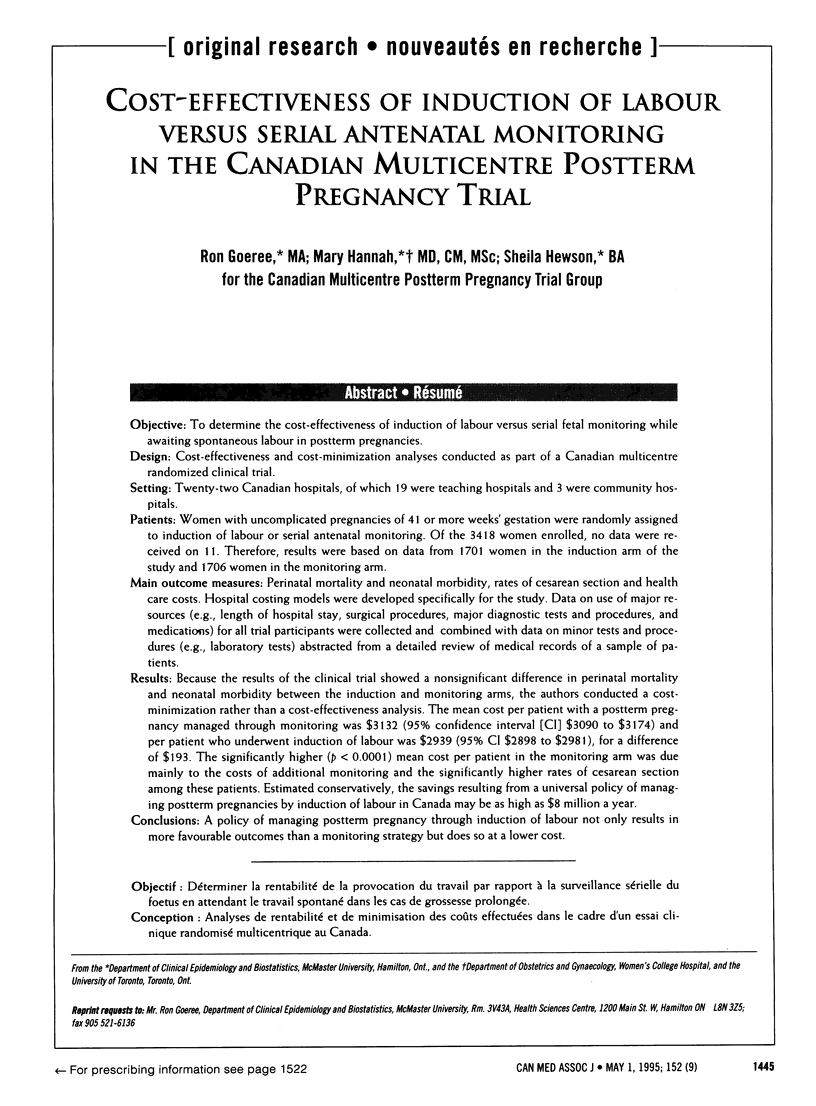
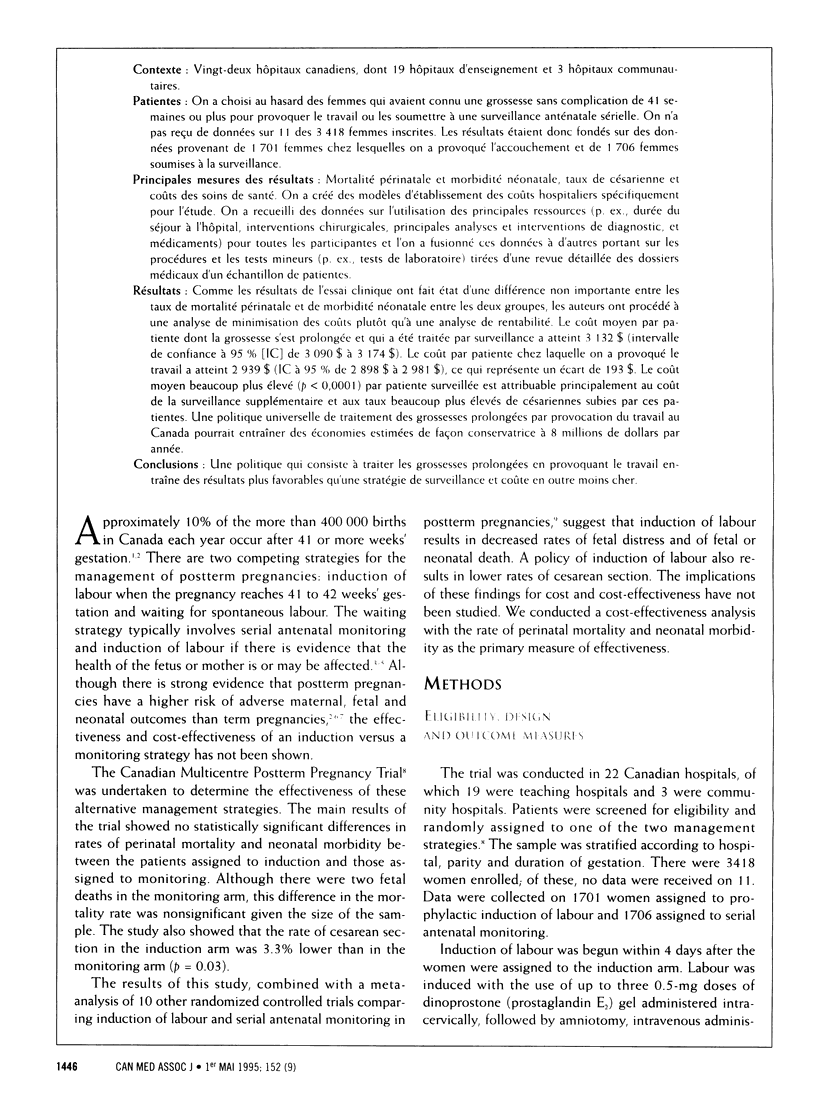
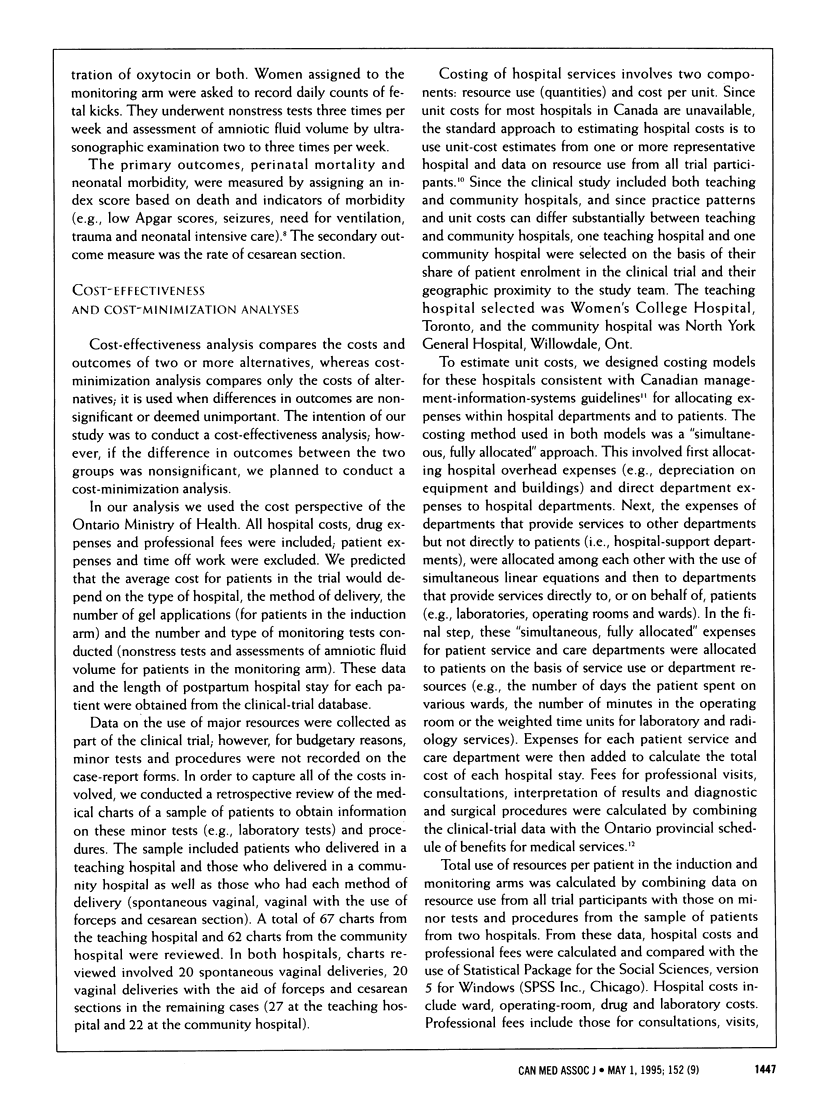
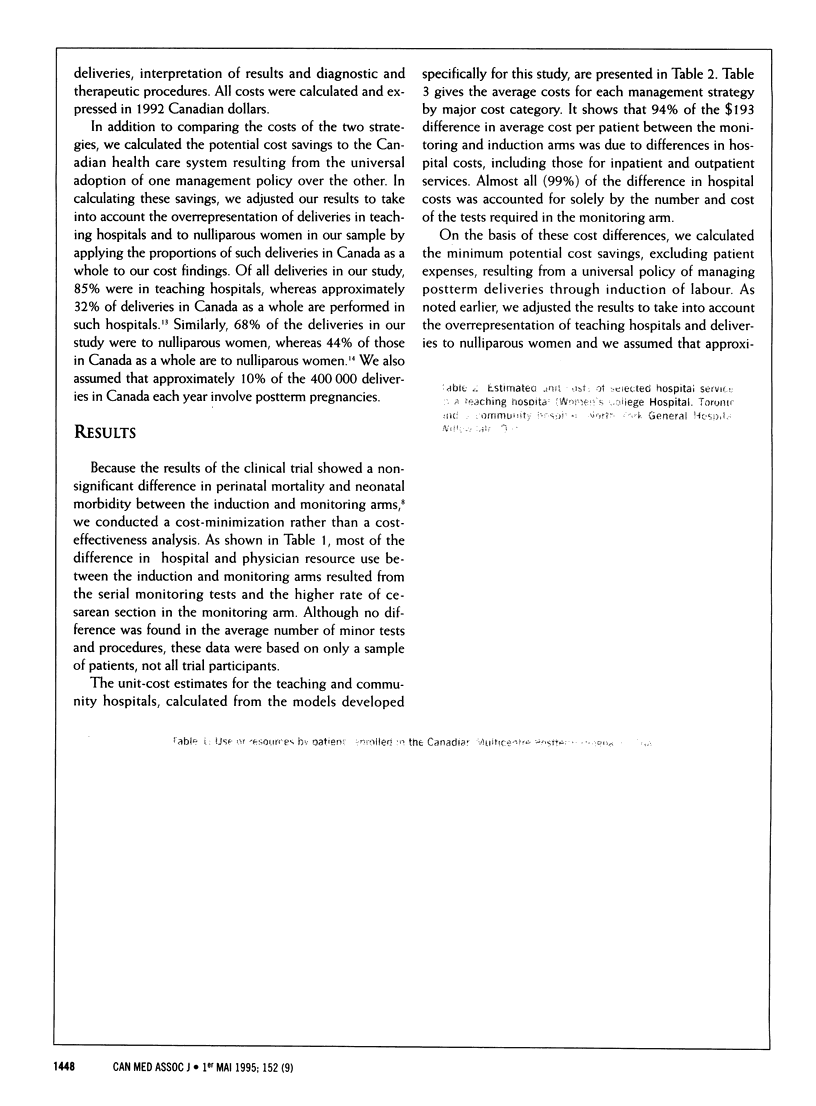
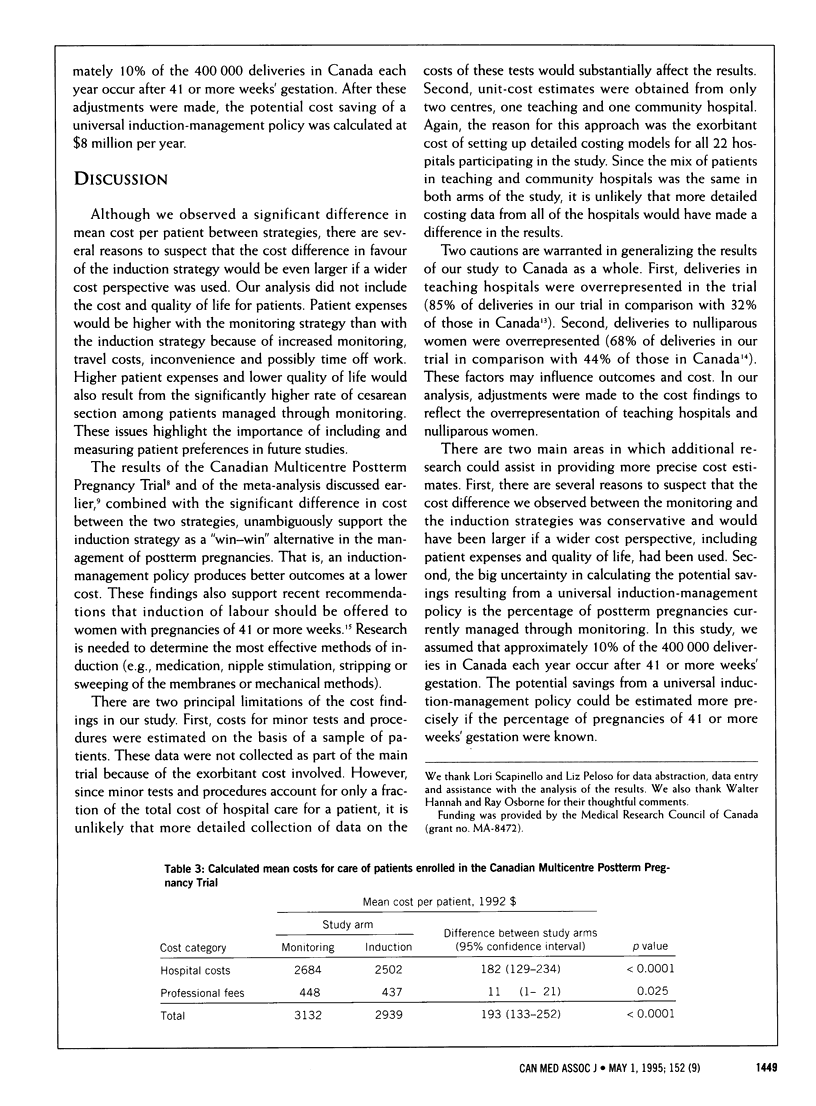

Selected References
These references are in PubMed. This may not be the complete list of references from this article.
- BROWNE J. C. Postmaturity. Am J Obstet Gynecol. 1963 Mar 1;85:573–582. [PubMed] [Google Scholar]
- Beischer N. A., Evans J. H., Townsend L. Studies in prolonged pregnancy. I. The incidence of prolonged pregnancy. Am J Obstet Gynecol. 1969 Feb 15;103(4):476–482. doi: 10.1016/s0002-9378(15)31849-4. [DOI] [PubMed] [Google Scholar]
- Crowley P., O'Herlihy C., Boylan P. The value of ultrasound measurement of amniotic fluid volume in the management of prolonged pregnancies. Br J Obstet Gynaecol. 1984 May;91(5):444–448. doi: 10.1111/j.1471-0528.1984.tb04781.x. [DOI] [PubMed] [Google Scholar]
- Hannah M. E., Hannah W. J., Hellmann J., Hewson S., Milner R., Willan A. Induction of labor as compared with serial antenatal monitoring in post-term pregnancy. A randomized controlled trial. The Canadian Multicenter Post-term Pregnancy Trial Group. N Engl J Med. 1992 Jun 11;326(24):1587–1592. doi: 10.1056/NEJM199206113262402. [DOI] [PubMed] [Google Scholar]
- Johnson J. M., Harman C. R., Lange I. R., Manning F. A. Biophysical profile scoring in the management of the postterm pregnancy: an analysis of 307 patients. Am J Obstet Gynecol. 1986 Feb;154(2):269–273. doi: 10.1016/0002-9378(86)90653-8. [DOI] [PubMed] [Google Scholar]
- Shime J., Gare D. J., Andrews J., Bertrand M., Salgado J., Whillans G. Prolonged pregnancy: surveillance of the fetus and the neonate and the course of labor and delivery. Am J Obstet Gynecol. 1984 Mar 1;148(5):547–552. doi: 10.1016/0002-9378(84)90745-2. [DOI] [PubMed] [Google Scholar]


